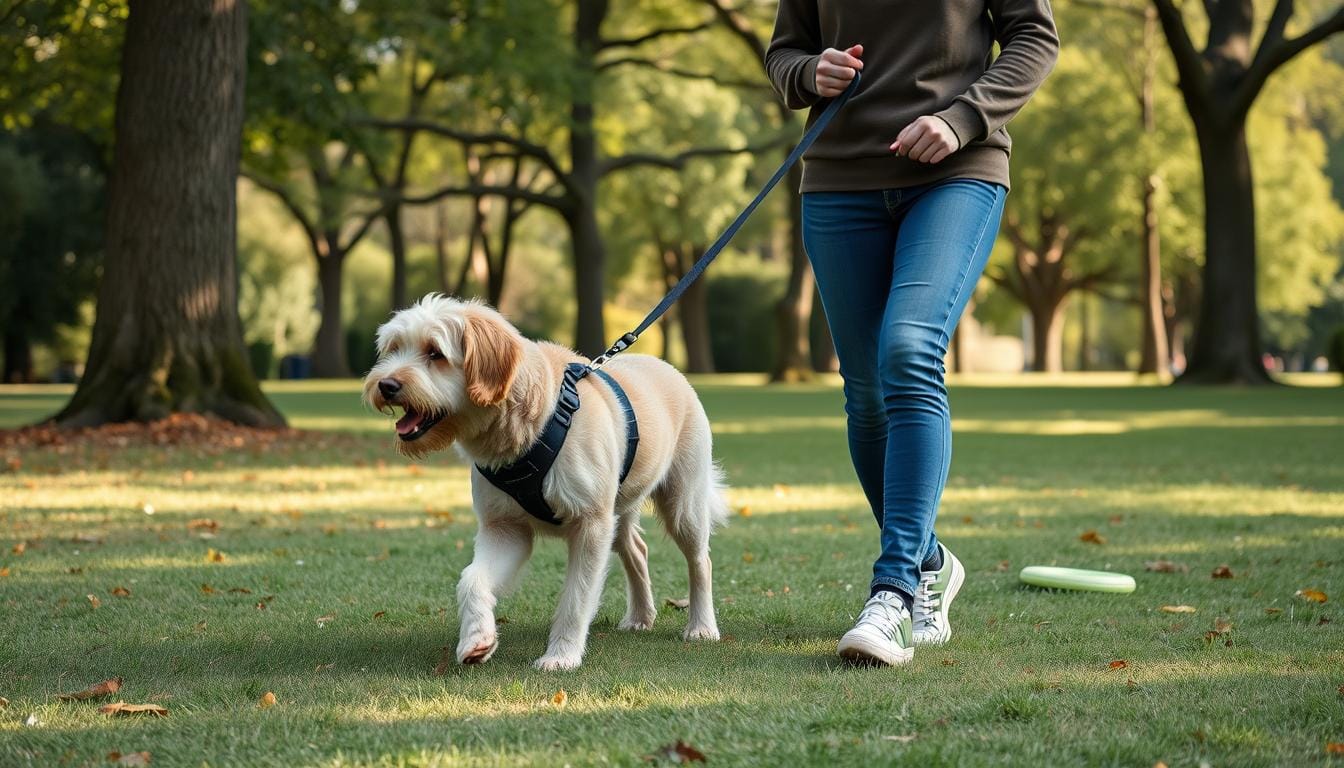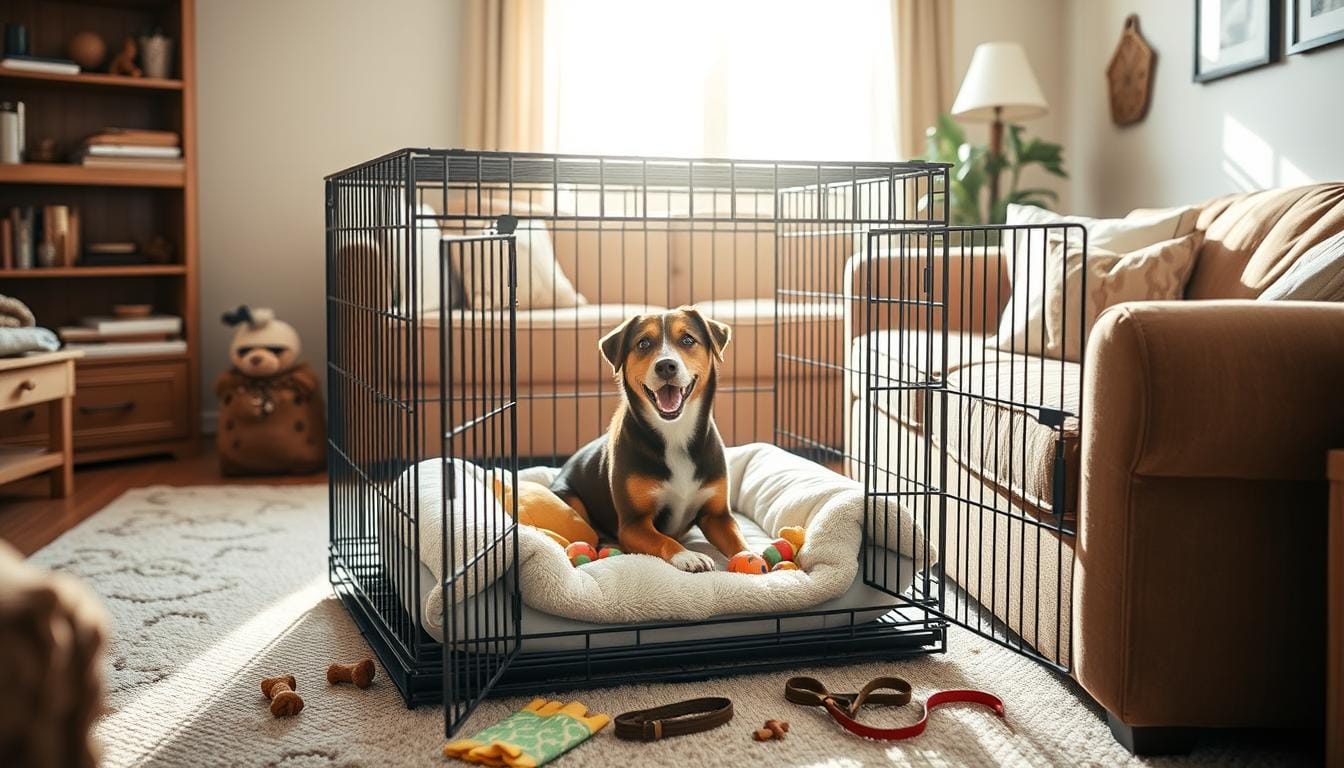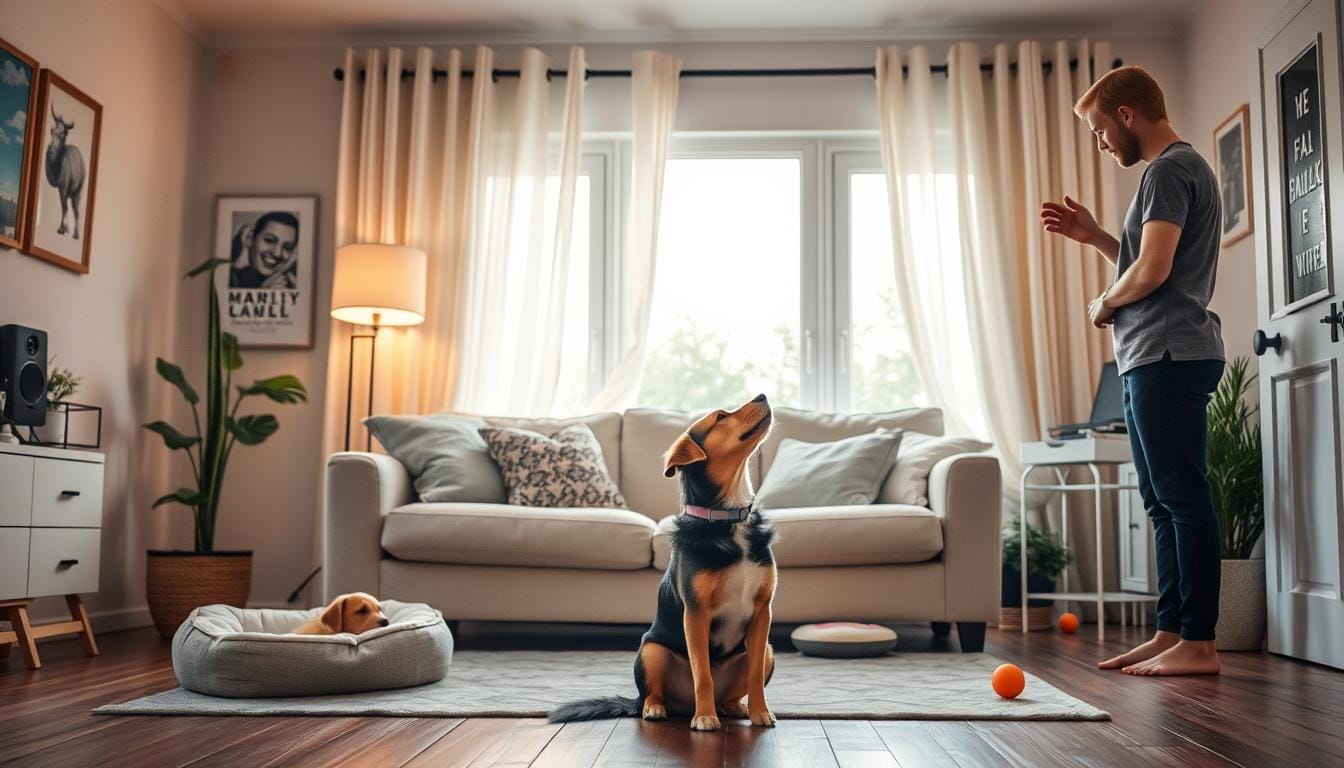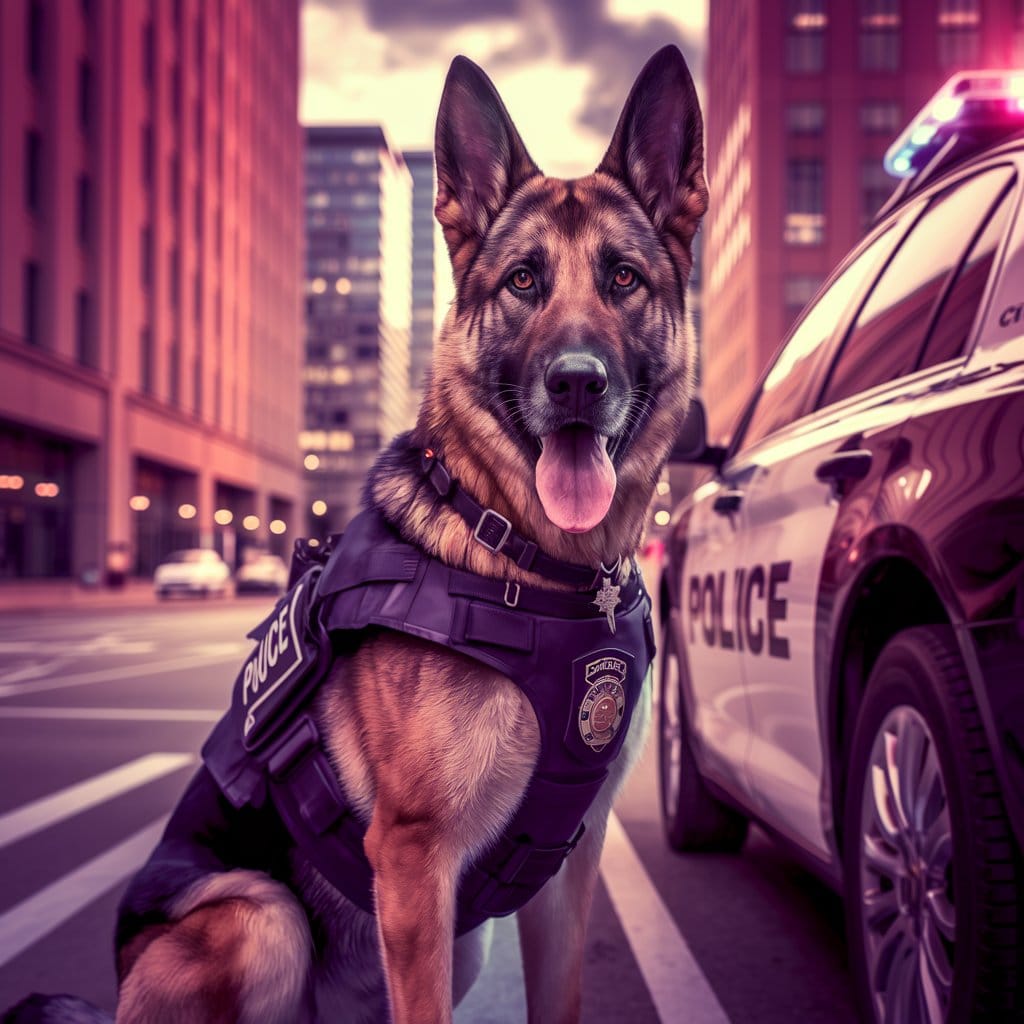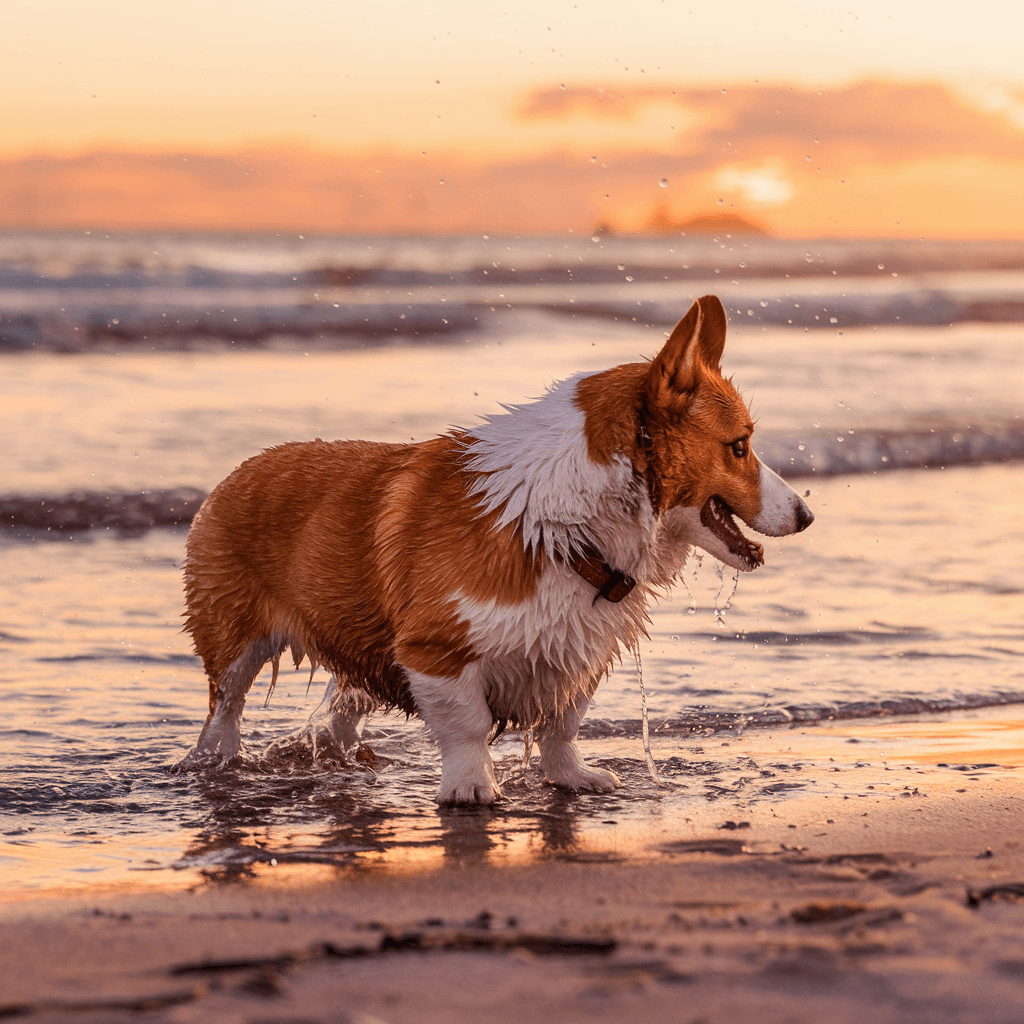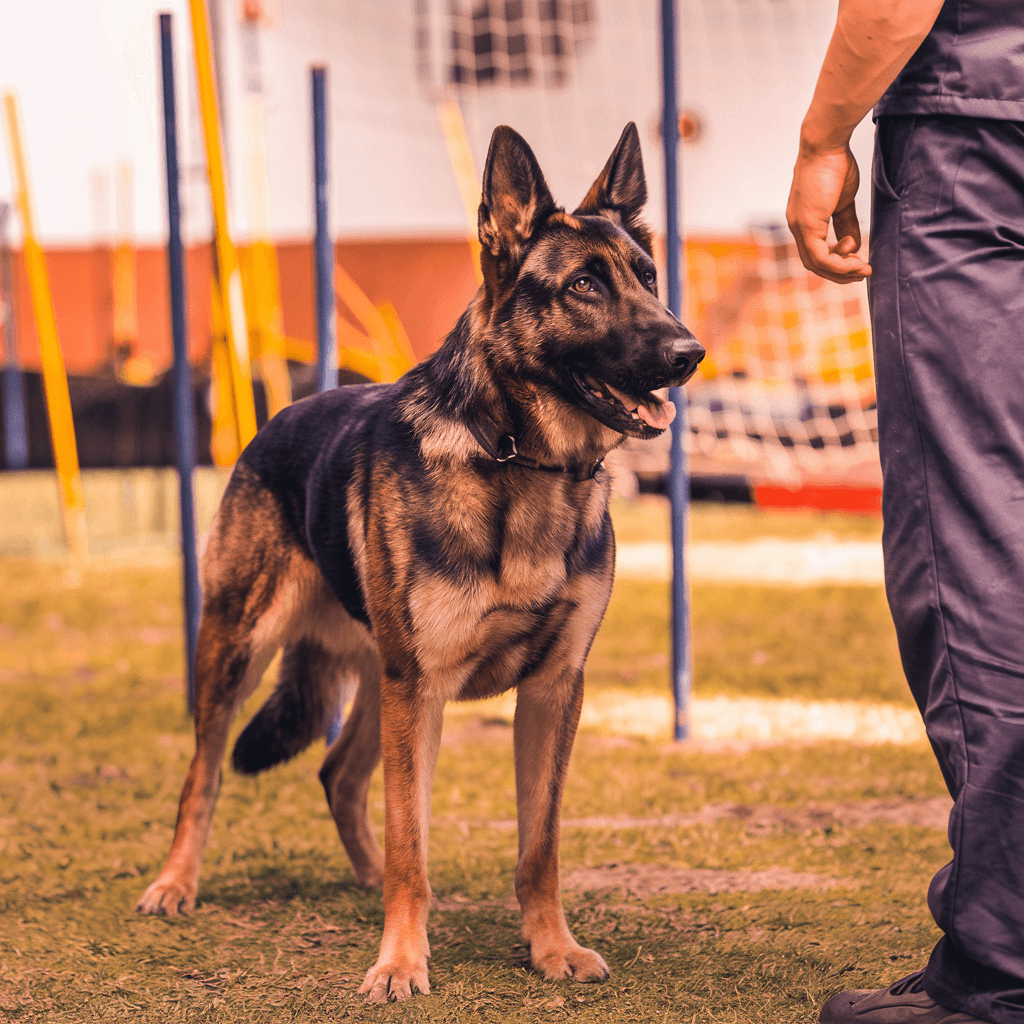Dogs can sense human emotions instinctively. They read our body language and facial expressions. This lets them communicate with us in their own way, forming a special bond.
Choosing the right dog leash is key for effective training. A good leash helps you guide your dog and teach them new things. It’s like an extension of your arm.
We’ve gathered expert tips for picking the best dog leash. From simple nylon leashes to special training tools, we’ve got you covered. Let’s explore how the right leash can strengthen your bond with your dog.
Key Takeaways
- Standard nylon leashes are lightweight, durable, and cost-effective for everyday use
- Leather leashes offer sophistication and durability but require regular maintenance
- Leash length typically ranges from 4 to 6 feet, depending on your dog’s size and walking style
- Thinner leashes suit small dogs, while thicker widths are better for medium to large breeds
- Retractable leashes are not recommended due to safety concerns and lack of control
- Additional features like reflective materials and waste bag dispensers can enhance leash functionality
- Proper leash handling techniques are crucial for effective training and safety
Understanding the Importance of a Proper Dog Leash
A proper dog leash is key for keeping dogs safe and in control. In cities like New York, where dogs get special treats, it’s even more important. The city’s busy streets and loud noises make a good leash essential.
| Leash Type | Usage Percentage | Key Benefit |
|---|---|---|
| Standard Leashes | 80% | Basic training |
| Retractable Leashes | 20% | Flexibility (with caution) |
| Adjustable Leashes | 10% | Length versatility |
| Special Feature Leashes | 15% | Added convenience |
Leash safety is a big deal. Over 90% of places require dogs to be leashed in public. This shows how important leashes are for keeping everyone safe.
Using a leash right helps dogs meet each other safely. It stops fights by keeping dogs calm. This makes the world a safer place for our pets and others.
“A leash is not just a tool, it’s a lifeline connecting you to your dog’s safety and well-being.”
The right leash makes walks better and helps teach good behavior. With 70% of owners liking a six-foot leash, finding the right balance is crucial in cities.
Types of Dog Leashes for Training
There are many types of dog leashes for training. Knowing the differences helps us pick the right one for our dog’s needs.
Standard Leashes
Standard leashes are the most common. They’re usually made of nylon or leather and are 6 feet long. They work well for everyday walks and basic training.
Retractable Leashes
Retractable leashes let dogs explore more. They can stretch from 4 to 30 feet and lock in place. But, they need careful use during training.
Adjustable Leashes
Adjustable leashes are very flexible. They can change from 3 to 6 feet long. This makes them great for different training situations.
Martingale Leashes
Martingale leashes are a mix of a collar and leash. They help stop dogs from pulling on walks. They offer a good balance of comfort and control.
| Leash Type | Length | Best For |
|---|---|---|
| Standard | 6 feet | Everyday use, basic training |
| Retractable | 4-30 feet | Exploring, supervised freedom |
| Adjustable | 3-6 feet | Versatile training scenarios |
| Martingale | Varies | Pull prevention, gentle control |
Choosing the right leash is key for your dog’s training. Each type has its own benefits, fitting different training needs and dog behaviors.
Materials Matter: Selecting the Right Leash Composition
Choosing the right leash materials is key for effective dog training. We’ll look at different options to help you pick the best for your furry friend.
Nylon Leashes: Pros and Cons
Nylon leashes are strong and light. They’re easy to clean and come in many colors. A nylon leash is great for daily use. But, be careful of friction burns if your dog pulls a lot.
Leather Leashes: Durability and Comfort
Leather leashes are durable and comfy. They get softer with age. A leather leash gives a good grip, making it hard for your dog to slip. Keeping them clean is important.
Chain Leashes: When to Consider Them
Chain leashes can stop chewing but need careful use. They’re good for specific training or dogs that chew a lot. Always think about your dog’s safety with a chain leash.
| Material | Pros | Cons |
|---|---|---|
| Nylon | Lightweight, affordable, easy to clean | Potential for friction burns |
| Leather | Durable, comfortable, good grip | Requires maintenance |
| Chain | Deters chewing, long-lasting | Heavy, potential for teeth damage |
The best leash material depends on your dog’s size, behavior, and training needs. Think about weather resistance and cleaning ease when choosing.
Dog Leash Length: Finding the Perfect Fit
Choosing the right leash length is key for good dog training and comfy walks. The best leash length depends on your dog’s size, training level, and where you’ll walk them.
Most leashes are 3 to 6 feet long, with 6 feet being the top pick for daily walks. Shorter leashes, like 3 to 4 feet, are great for puppies, dogs in training, or when you need tight control. As your dog gets better with the leash, you can switch to a 5 or 6-foot leash for more room to roam.

In busy cities, a 12-inch Urban Walker leash is perfect for keeping your dog close. But for hiking or field work, longer leashes of 8 to 15 feet let your dog explore more while you still have control.
| Leash Length | Best Use | Dog Size/Training Level |
|---|---|---|
| 3-4 feet | Training, crowded areas | Puppies, untrained dogs |
| 5-6 feet | Everyday walks | Trained dogs, all sizes |
| 8-15 feet | Hiking, field work | Well-trained dogs |
| 12 inches | Urban environments | All dogs in busy areas |
When picking a dog leash, don’t forget about the width. A 5/8″ width is good for small to medium dogs. A 3/4″ width is better for bigger dogs or those still learning. The right leash length and size can really help with training and daily walks.
Leash Width and Strength: Matching to Your Dog’s Size
Choosing the right leash is key for your dog’s comfort and safety. We’ll look at how to pick the best leash for your dog’s size and how they pull.
Thin Leashes for Small Breeds
Small dogs do well with thinner leashes, about 1/2 inch wide. These leashes are light and comfy for little dogs. A leash that fits your dog’s size makes walking easier for both of you.
Thicker Leashes for Large and Strong Dogs
Medium to large dogs need wider leashes, 3/4 inch or 1 inch. These leashes are stronger and last longer, helping you control bigger dogs. They also prevent the leash from breaking during walks.
Considering Your Dog’s Pulling Habits
Dogs that pull a lot need a special leash. For dogs that pull hard, a strong leash is best. Look for leashes up to 2 inches wide for better control and comfort. The right leash makes walks better for you and your dog.
| Dog Size | Recommended Leash Width | Leash Strength |
|---|---|---|
| Small (up to 20 lbs) | 1/2 inch | Light |
| Medium (20-50 lbs) | 3/4 inch | Medium |
| Large (50+ lbs) | 1 inch | Strong |
| Extra Large/Strong Pullers | 1.5 – 2 inches | Extra Strong |
Matching leash width and strength to your dog’s size and behavior makes walks safe and comfy. Always check your leash for wear and replace it to keep walks safe.
Special Features to Enhance Training Sessions
Adding special leash features can really help with training. Let’s look at some cool leash accessories and training aids. They can make your dog’s learning journey better.
Traffic handles are a big help in crowded places. They’re shorter grips near the collar for quick control. Padded handles make long training sessions easier, keeping your hands comfortable.

When it’s dark, visibility is key. Reflective or LED leashes keep you and your dog safe. They’re a must in cities where it’s hard to see.
Keeping training routines consistent is important. Leashes with built-in waste bag dispensers and attachment rings are handy. They let you carry treats, toys, or other tools without juggling them.
| Leash Feature | Benefit | Best For |
|---|---|---|
| Traffic Handle | Quick Control | Busy Areas |
| Padded Handle | Comfort | Long Sessions |
| Reflective/LED | Visibility | Night Walks |
| Waste Bag Dispenser | Convenience | All Outings |
Using these leash features in your training can make it better for you and your dog. The right tools can really help you reach your training goals.
Safety First: Reflective and Visibility-Enhancing Leashes
Safety is key when walking your dog at night. Using leashes that help you see better is crucial. We’ll look at what’s important for walking in the dark and the best ways to stay visible.
Nighttime Walking Considerations
Walking your dog at night can be tricky. It’s harder to see, which raises the risk of accidents. That’s why reflective leashes are a big help. They have strips or stitching that reflect light, making you and your dog easier to spot.
Reflective Materials and LED Options
Reflective leashes are made from various materials, like nylon, which is strong. Some leashes even have LED lights. An LED leash shines bright, making you visible even without streetlights. This is really helpful during early morning or evening walks.
Increasing Visibility in Urban Environments
Walking your dog at night in the city is even harder. There’s more traffic, crowded sidewalks, and dark spots. It’s important to choose a leash that stands out. Look for ones with lots of reflective parts or bright colors to be seen in the city.
- Reflective leashes increase visibility by up to 300 feet
- LED dog leashes provide up to 8 hours of continuous illumination
- 80% of dog owners report feeling safer during nighttime walks with visibility-enhancing leashes
Getting a good reflective or LED leash is more than a trend. It’s about keeping you and your dog safe during nighttime walks.
Leash Training Techniques for Different Scenarios
Effective leash training methods change based on the situation. Loose leash walking makes walks more fun for dogs and owners. It’s great for dogs that pull, easing the strain on arms and wrists.
For reactive dogs, Behavior Adjustment Training (BAT) works well. BAT lets dogs use their natural body language in stressful times. It boosts their confidence and helps prevent future reactivity.
In crowded places like airports, structured heeling is key. This method teaches dogs to walk right by your side. It requires focus and rewards but keeps control in busy spots.
| Scenario | Recommended Technique | Benefits |
|---|---|---|
| Regular walks | Loose leash walking | Improved relationship, less frustration |
| Reactive dogs | Behavior Adjustment Training (BAT) | Boosts confidence, prevents reactivity |
| Crowded areas | Structured heeling | Precise control, safety in busy environments |
To stay safe on walks, use a specific leash holding technique. Put your thumb through the leash loop, then close your fist. Use your second hand lower on the leash for better control. This way, you can quickly release the leash if needed while keeping good leash manners.
Avoiding Common Leash Training Mistakes
Leash training can be tough, but you can avoid common mistakes. GoodDog Helpline, celebrating ten years in 2023, offers valuable tips. These tips will help you avoid common leash training errors.
Inconsistent Commands
One big mistake is using inconsistent commands. Clear, consistent cues are key for good communication with your dog. Use simple phrases and stick to them during fun training sessions.
Improper Leash Handling
Bad leash handling can slow your progress. Letting your dog pull ahead is a major mistake. It leads to bad habits. Here are some tips for better leash handling:
- Use a well-fitted harness and comfortable leash
- Maintain a loose leash while walking
- Avoid constant tension on the leash
Neglecting Positive Reinforcement
Not using positive reinforcement is a common mistake. Reward your dog with life rewards for following rules. This keeps them motivated and strengthens your bond. Remember, leash training should be fun for both of you.
By avoiding these mistakes and using the right techniques, you’ll enjoy walks with your dog. If you need help, talk to experienced trainers. They can give you personalized advice for your situation.
Conclusion
Our journey through dog leash selection and effective dog training techniques has unveiled crucial insights. We’ve explored various leash types, materials, and features. Each plays a vital role in shaping successful training outcomes. The right leash isn’t just a tool; it’s a bridge connecting you and your furry friend during walks and training sessions.
Leash training tips we’ve discussed emphasize the importance of consistency, positive reinforcement, and adapting to your dog’s unique needs. Remember, the leash is more than a safety device – it’s a communication tool. By mastering proper leash handling and avoiding common mistakes, you’re setting the stage for enjoyable, stress-free walks.
As we wrap up, let’s not forget the broader impact of responsible leash use. Recent studies show that leashed dogs are less likely to disrupt wildlife or cause conflicts in public spaces. By following leash laws, we’re not only training our dogs but also contributing to safer, cleaner communities. So, grab that perfect leash, head out, and enjoy the journey of building a stronger bond with your four-legged companion!







